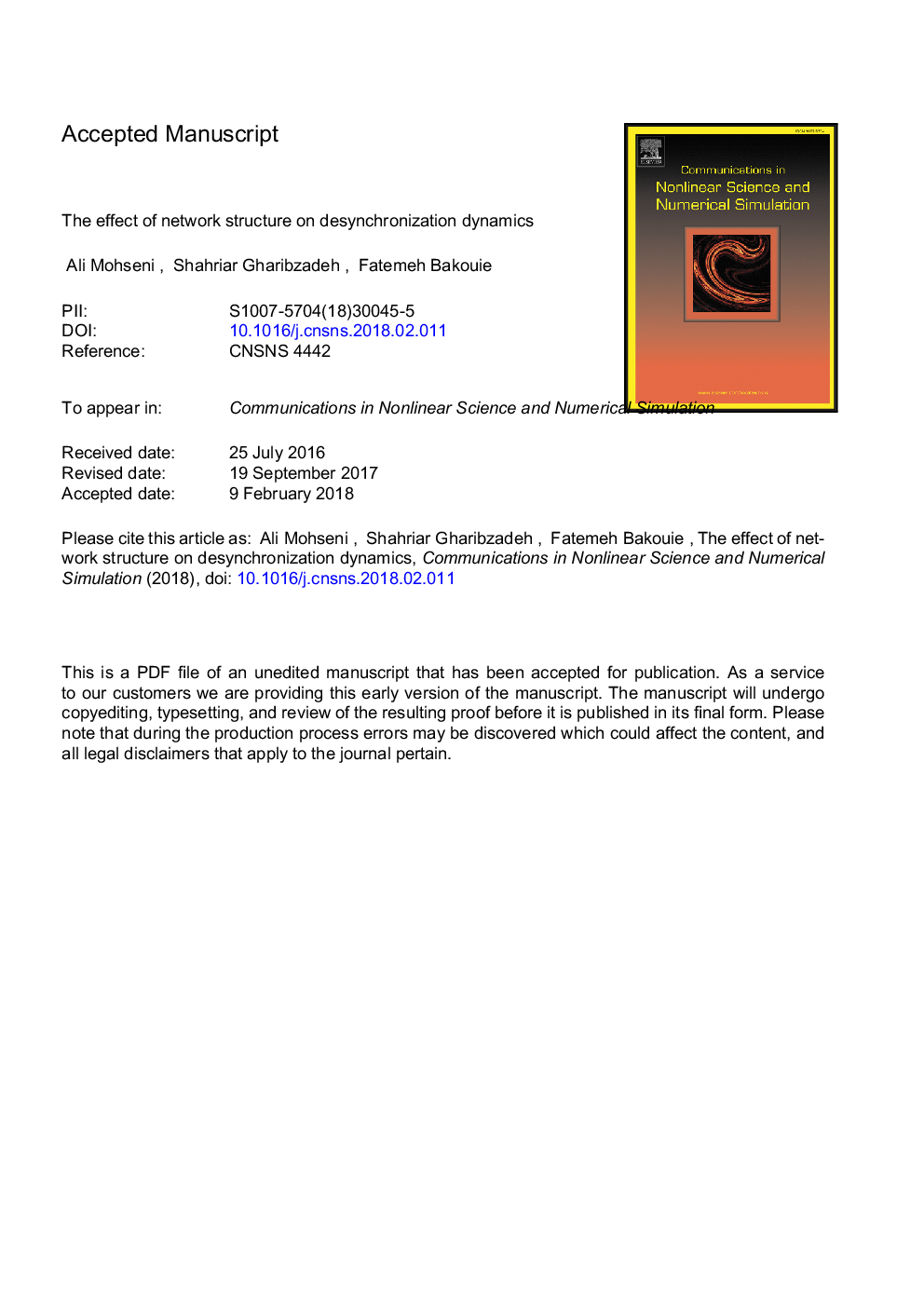| Article ID | Journal | Published Year | Pages | File Type |
|---|---|---|---|---|
| 7154564 | Communications in Nonlinear Science and Numerical Simulation | 2018 | 22 Pages |
Abstract
Synchronization plays a significant role in complex systems. Often, however, excessive synchronization needs to be avoided, as it can lead to dysfunctional states, for instance, epileptic seizures in the brain. We explored the impact of network structure on the dynamics of synchronization suppression. For this purpose, we considered two network structures: 1) Barabási-Albert scale-free and 2) Watts-Strogatz small-world, networks. The dynamics of each network takes the form of a generalized Kuramoto model, in which contrarian nodes suppress network synchronization. For each type of network structure, we used three different strategies for selecting contrarian nodes: 1) random selection, 2) selection of high-degree nodes, and 3) selection of driver nodes. We examined the influence of network structure on the desynchronization dynamics of the entire system. Our results showed that the network structure affects the dynamics of synchronization suppression. However, this impact depends on the contrarian selection strategy: 1) When the contrarians are selected randomly, the influence of small-world structure is more on synchronization suppression. 2) With high-degree nodes as contrarians, their desynchronization impact is largely the same in both network structures. 3) With driver nodes as contrarians, the impact of network structures in desynchronization dynamics is more remarkable. In other words, the difference between order parameters in two different structures is larger.
Related Topics
Physical Sciences and Engineering
Engineering
Mechanical Engineering
Authors
Ali Mohseni, Shahriar Gharibzadeh, Fatemeh Bakouie,
